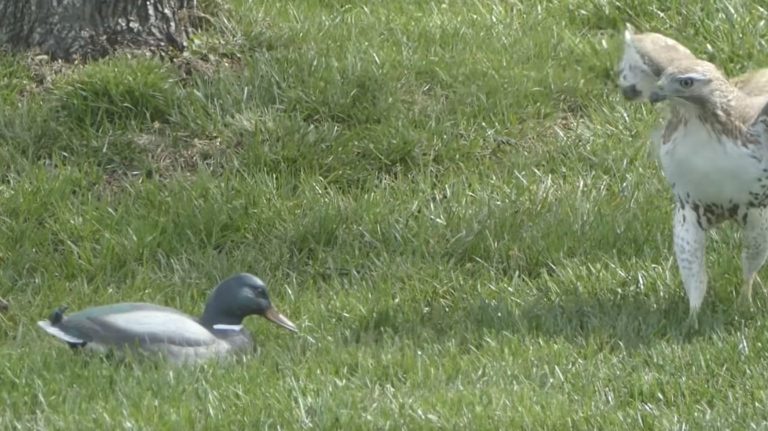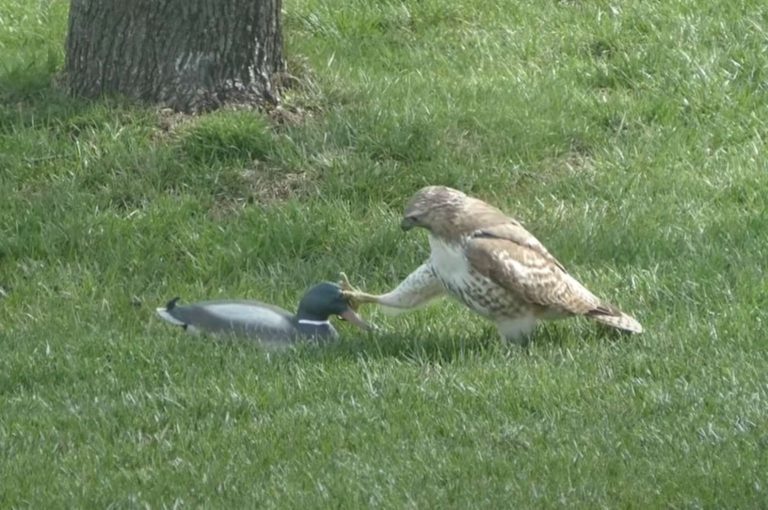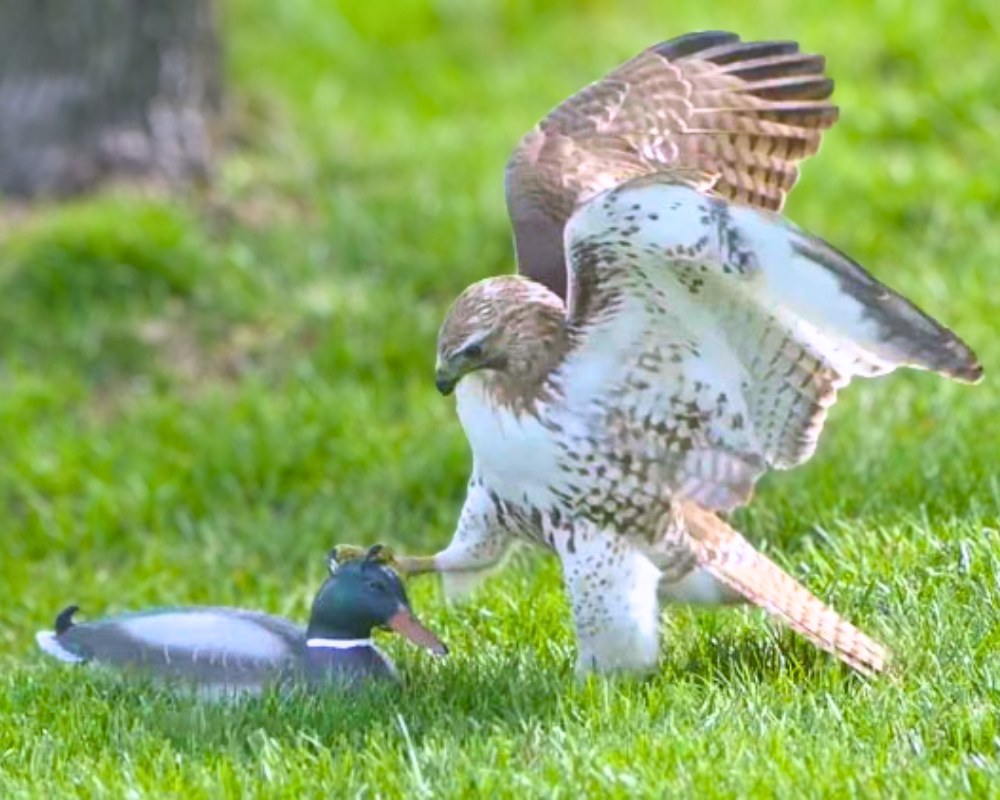In a moment that looks straight out of nature sitcoms, a hawk was left baffled — it approached a duck, ready to assert dominance, only to discover the “duck” didn’t move. Because it wasn’t real.
One fine day, a hawk on the hunt spotted what looked like a duck resting on turf. The predator strode closer, circling, testing, attempting a grab. But the duck remained totally still. No quack, no twitch — nothing. The hawk’s regal instincts kicked in, but something was off.
Persisting, the hawk peered from all angles, tested its talons, pressed on the duck’s surface as if trying to elicit a reaction. But no matter how much it tried, nothing changed. Finally, the hawk gave up and flew away — apparently defeated by its own confusion. Behind the scene: the “duck” was a lifelike decoy. (Yes, a fake bird.)

It’s a small, amusing episode — yet it tells us something. First, it underscores that predators rely heavily on reaction, movement, cues. Without them, even a hawk can misjudge reality. Secondly, it plays with our assumptions about dominance and fear in the animal world.

The hawk expected instinctive prey behavior — flight, panic, defense. But it got nothing. That void of response disrupted its mental map. The predator became puzzled rather than aggressive. In human terms: what do you do when someone doesn’t react to intimidation?
This little drama also hints at the complex communication networks in nature. Animals don’t just see other creatures; they interpret behavior. A frozen face, a still body, or no signal at all can sometimes save a life — or throw a predator off its game.
At the end, the hawk walked away, no worse for wear — but likely a little humbler. He tried, tested, withdrew. The decoy won by doing nothing.


